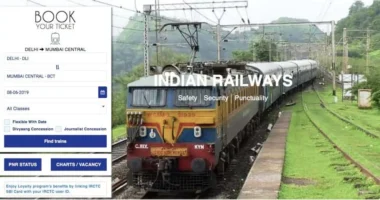The Indian government’s recent decision to allocate a whopping ₹2,028.57 crore as a bonus for railway staff has been making headlines, sparking discussions across the nation. While this substantial financial incentive is aimed at recognizing the efforts and dedication of railway employees, it’s also coinciding with a growing chorus of demands from unions for a pay scale update. This development highlights the complexities and challenges facing the railway sector today.
The Significance of the Bonus Allocation
The railway sector plays a pivotal role in India’s economy, serving as a backbone of national infrastructure. The allocation of such a substantial bonus signifies the government’s recognition of the critical work performed by railway staff. Here are the key highlights of this bonus:
- Financial Recognition: The ₹2,028.57 crore bonus is designed to reward over 1.1 million non-gazetted employees, thus enhancing their morale.
- Economic Impact: This bonus is expected to increase spending among employees, potentially boosting local economies.
- Timely Payout: Dispersing the bonus just before the festive season can act as a morale booster and ensure higher employee satisfaction.
Union Pay Scale Demands: A Longstanding Issue
While the bonus is a welcome gesture, it falls against the backdrop of longstanding demands from various railway unions for a revision of the current pay scales. Here are some reasons why the unions are pressing for a change:
- Inflation Concerns: With rising inflation, the current pay scales are seen as insufficient to meet the cost of living adjustments required for staff.
- Parallels with Other Sectors: Comparisons with other public sector employees reveal disparities that many unions believe should be rectified.
- Wage Stagnation: Many employees express concerns over stagnant wages in the face of increasing responsibilities and performance pressure.
Potential Implications of a Pay Scale Update
Updating the pay scales for railway staff could have significant implications, both positive and challenging:
- Employee Retention: A competitive pay scale could help retain skilled employees and reduce turnover.
- Workforce Motivation: Better financial incentives could increase job satisfaction and productivity levels.
- Budgetary Concerns: Adjusting the pay scales might require substantial recalibration of the railway’s financial planning and resource allocation.
Government’s Strategy and Possible Outcomes
The government’s current strategy of focusing on bonuses aims to mitigate immediate dissatisfaction and show goodwill towards the railway workforce. However, addressing deeper structural issues like pay scale revisions might be inevitable. Here’s what could unfold in the future:
- Negotiations with Unions: Continued dialogue and negotiations between the government and railway unions will be critical in reaching a compromise.
- Comprehensive Sector Review: There could be a larger push for a comprehensive review of the railway sector, including pay scales, working conditions, and operational efficiencies.
- Impact on Productivity: Government initiatives may focus on linking pay structures to performance metrics to ensure that increases in compensation translate into tangible improvements in service delivery.
The Role of Public Sentiment and Political Dynamics
Public sentiment and political dynamics could also influence how these issues are addressed:
- Public Support: There may be widespread public support for improved conditions for railway workers, especially given their essential role in public transportation.
- Political Pressures: Upcoming elections might push the government to respond more proactively to railway unions’ demands.
- Public-Private Partnerships: Exploring partnerships could be a way to bring in additional funding for pay scale adjustments without burdening taxpayers.
Conclusion: Balancing Acknowledgment with Reform
The ₹2,028.57 crore bonus is undoubtedly a step toward acknowledging the dedication of the railway workforce, yet it is not the end of the road. The government’s approach will need to balance immediate employee satisfaction while laying the groundwork for more sustainable, long-term reforms. Only through collaborative efforts with unions and stakeholders can the railway sector hope to address existing disparities and evolve into a more efficient and equitable entity.
“`





